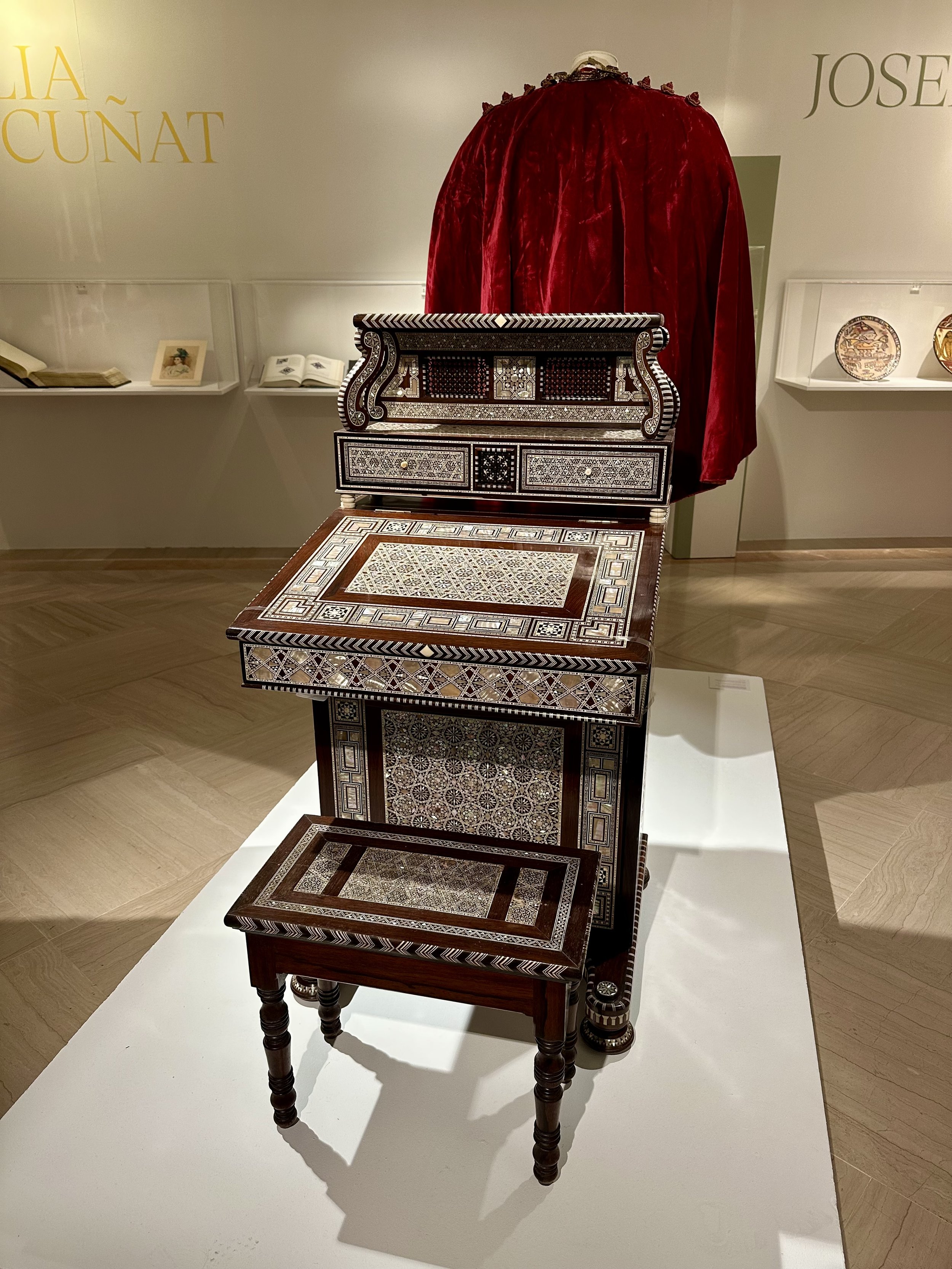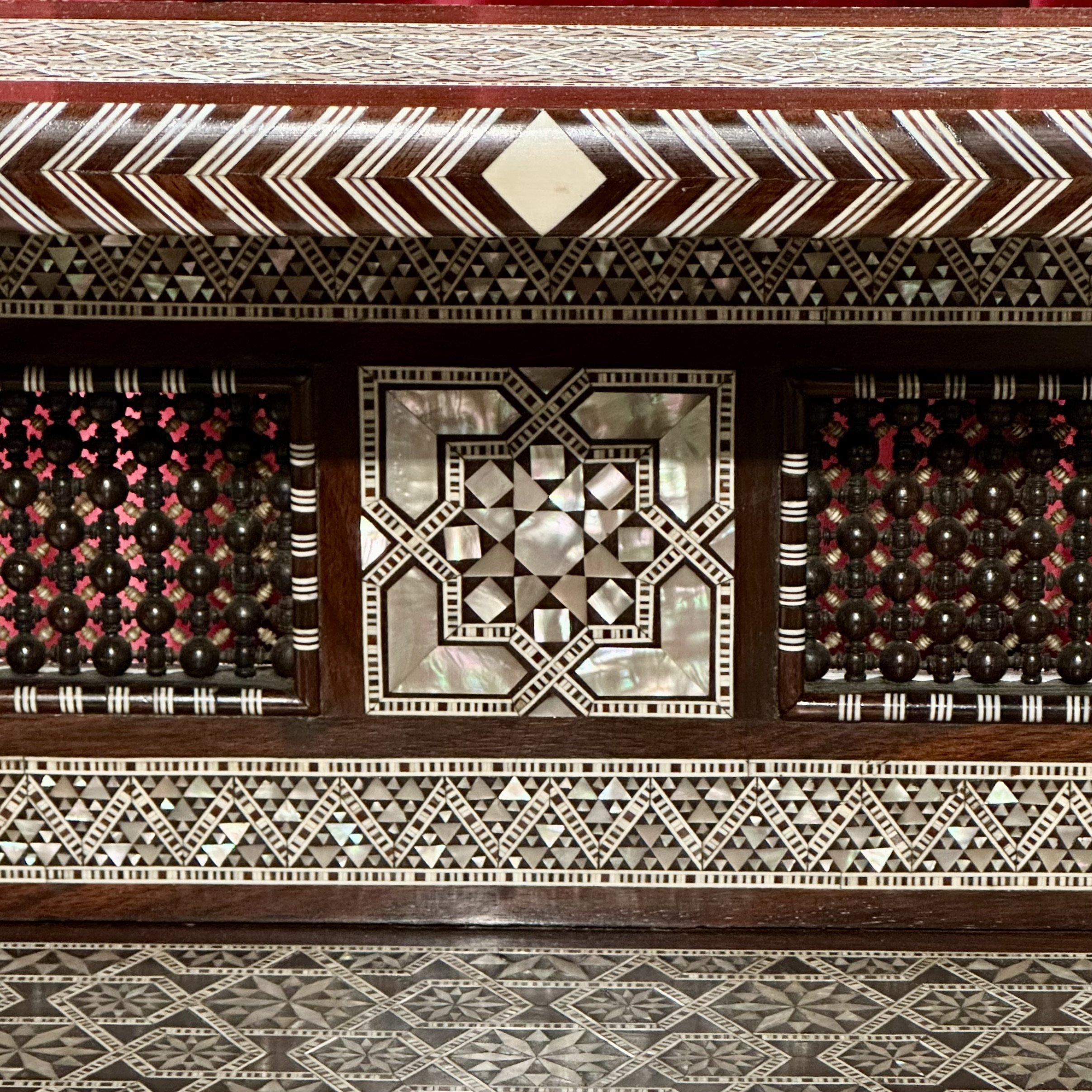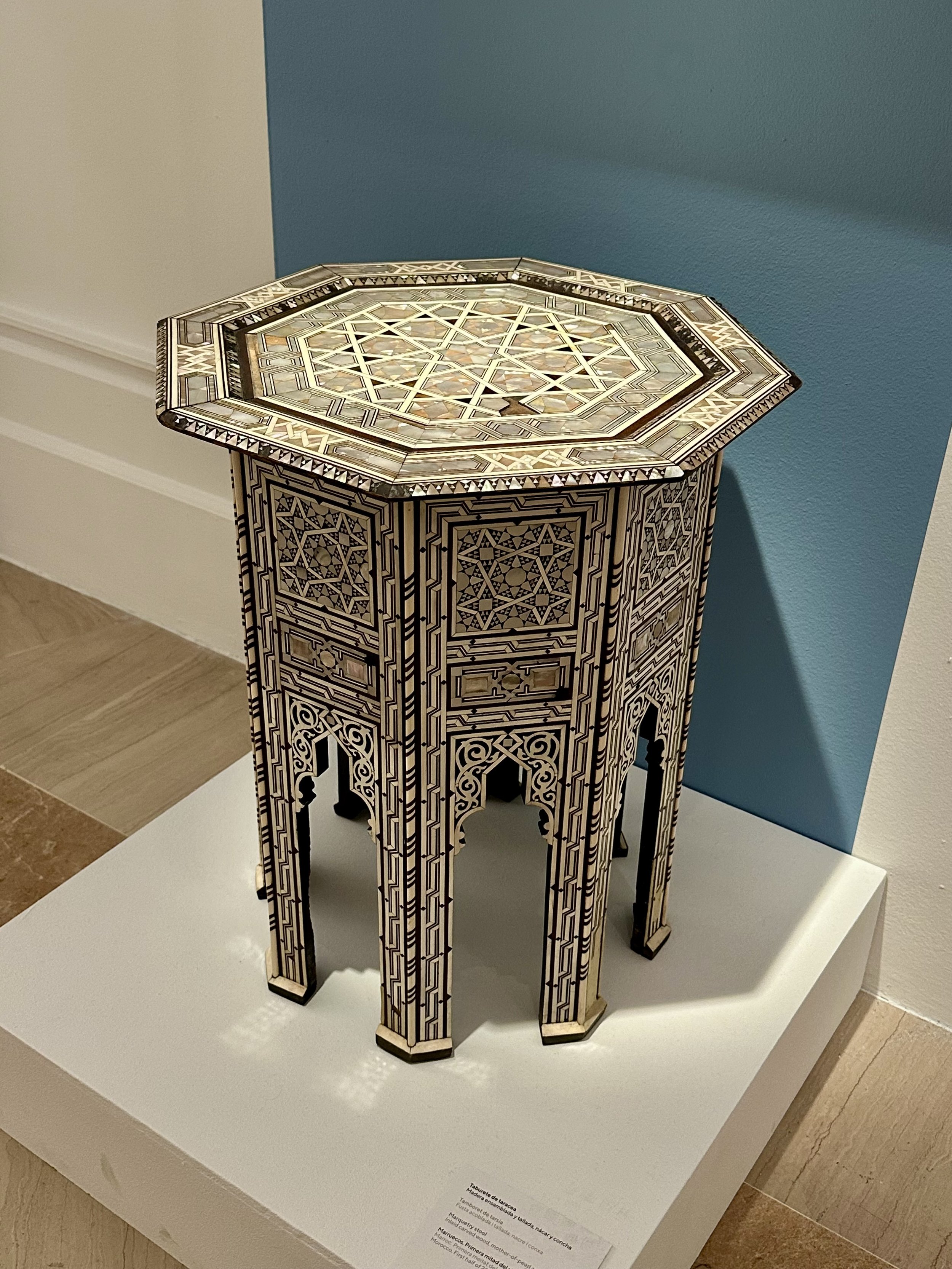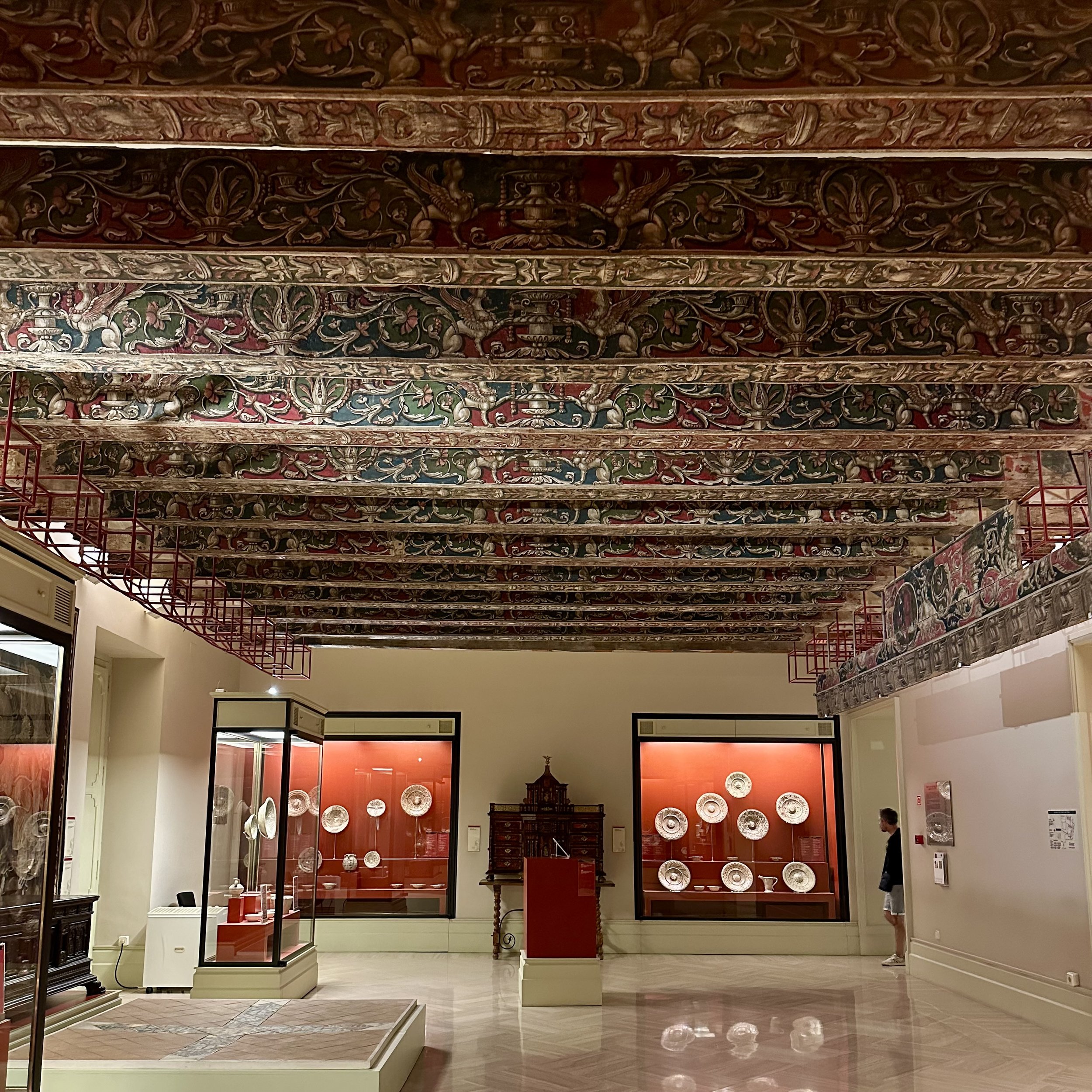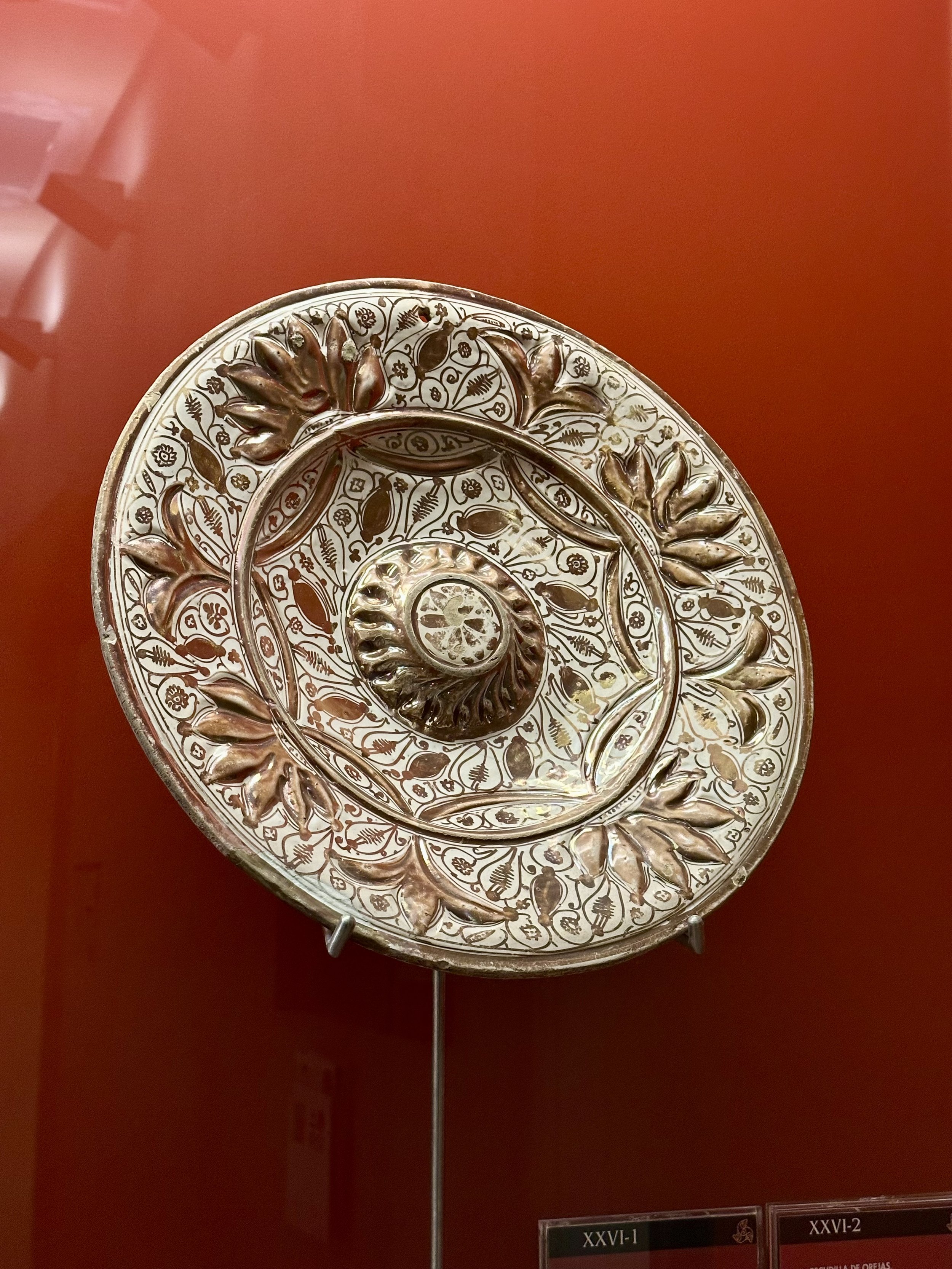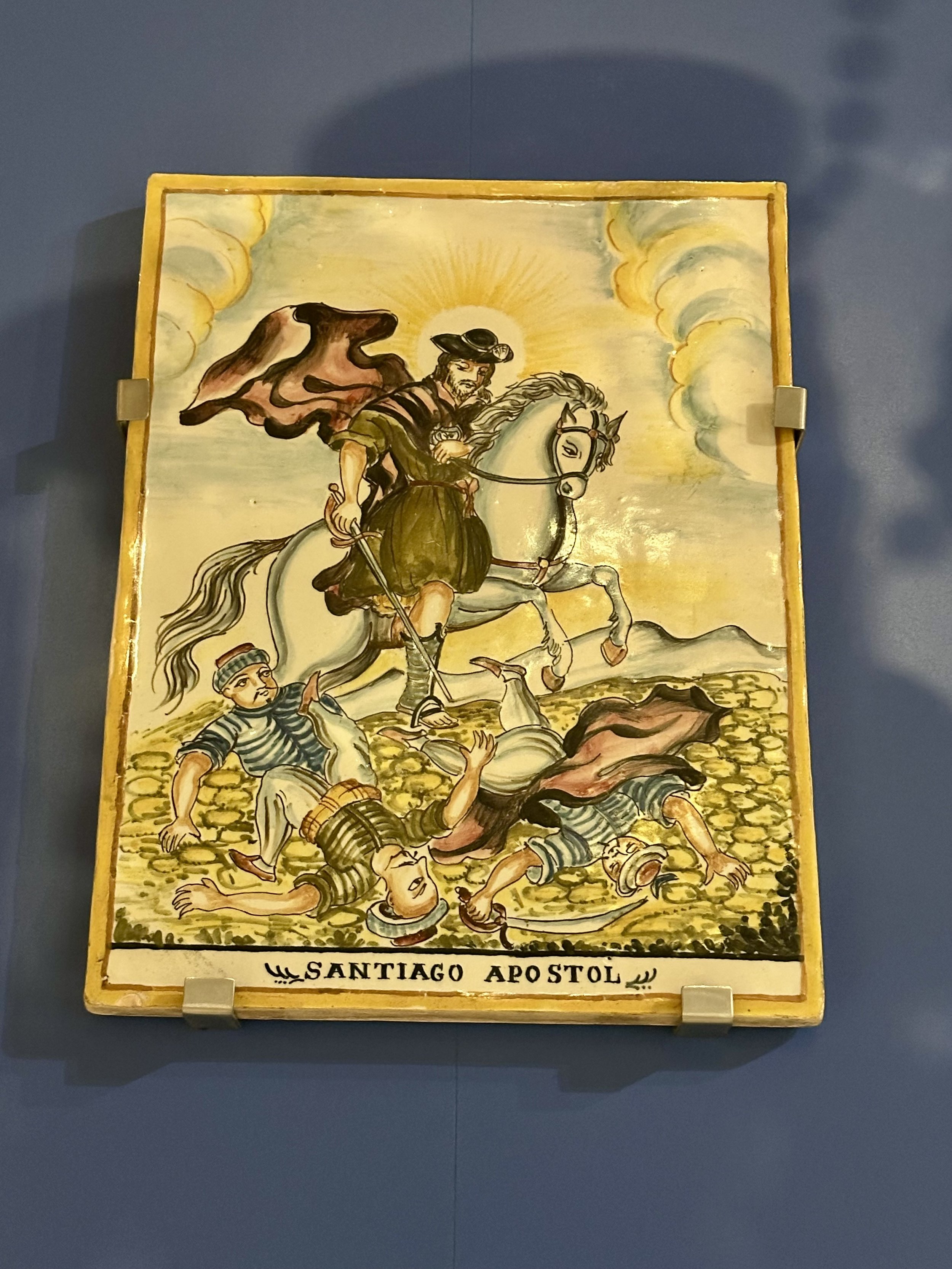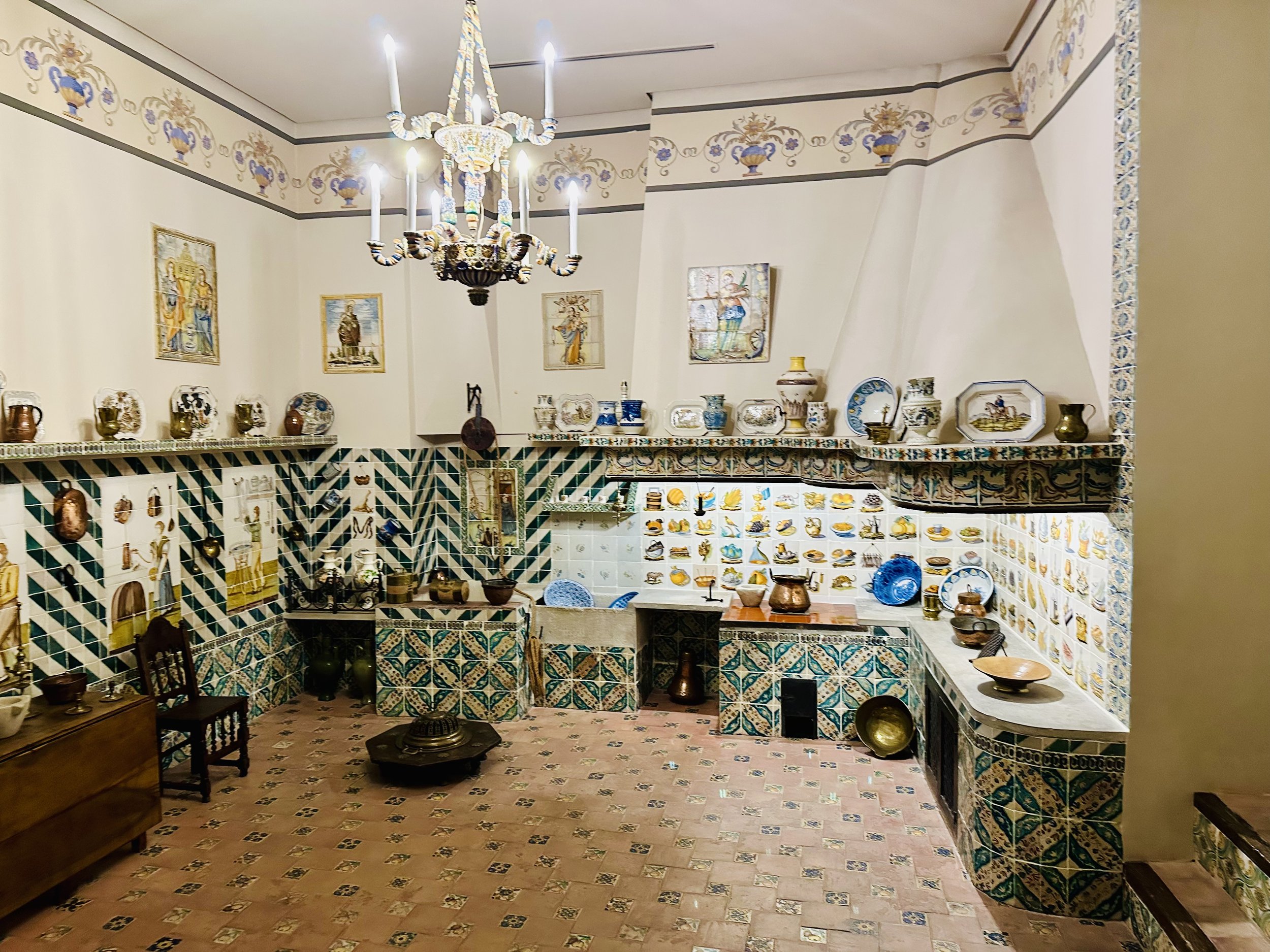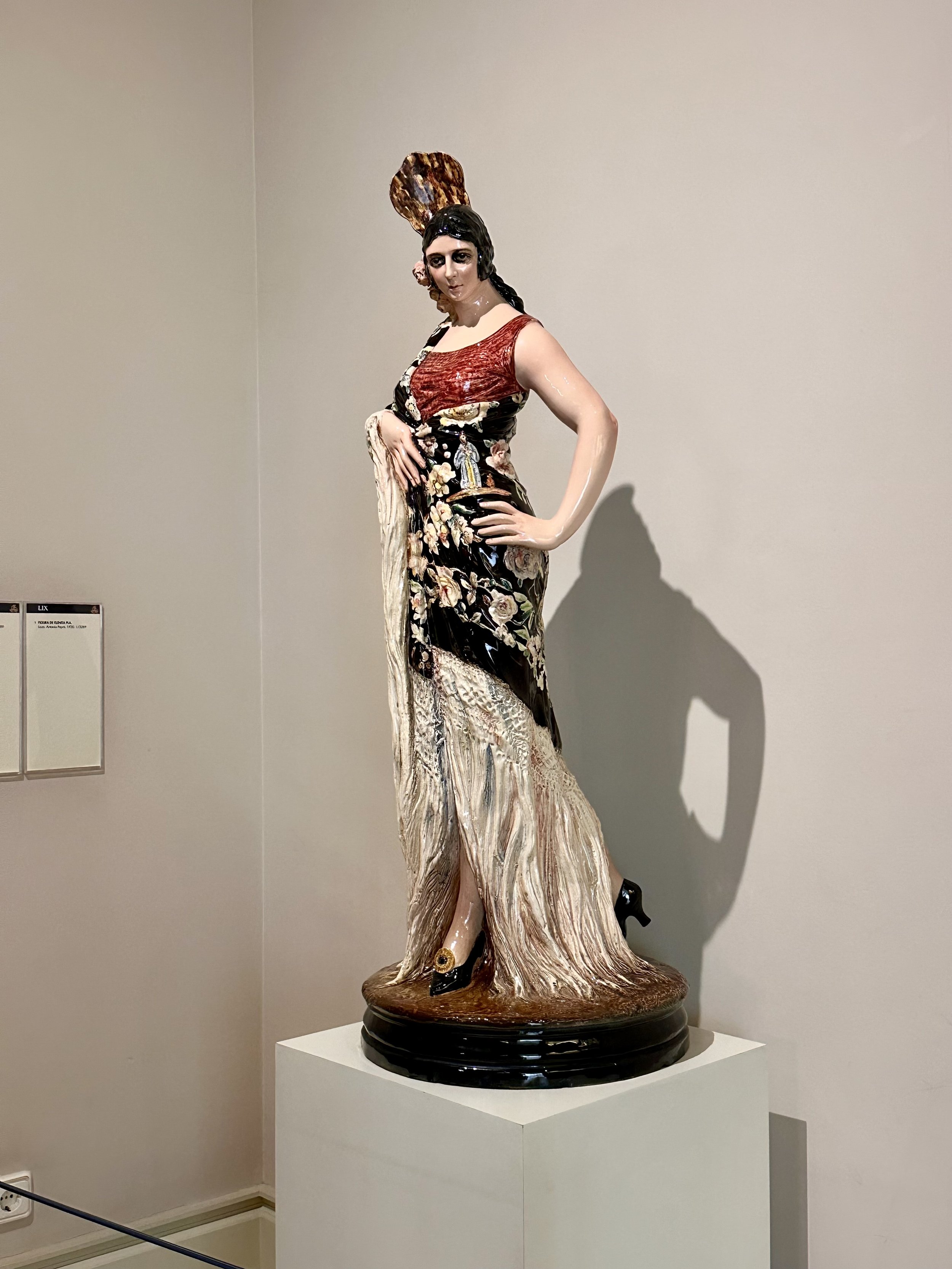Palace of the Marquis of Dos Aguas
The plan was to visit the González Martí National Museum of Ceramics and Decorative Arts. It happened to be housed in the Palau del Marqués de Dosaigües (Palace of the Marquis of Dos Aguas) Although the museum was fine, I found the palace to be much more impressive, so that’s the title of this post.
The palace was the ancestral home of the wealthy and powerful Rabassa de Perellós family, the descendants of a knight and the daughter of a knight. It was originally a Gothic manor built in the early 15th century. Starting in 1740, extensive renovations transformed the stately home into a Baroque palace. Today, it is owned by Spain’s Ministry of Education.
As we approached the building, I could see right away that it was special. The windows were framed in stone filigree and protected with lacy iron bars. The famous alabaster main door was covered in protective netting, but I could still see the explosion of stone figures and plants. It was more than lavish, it was over-the-top!
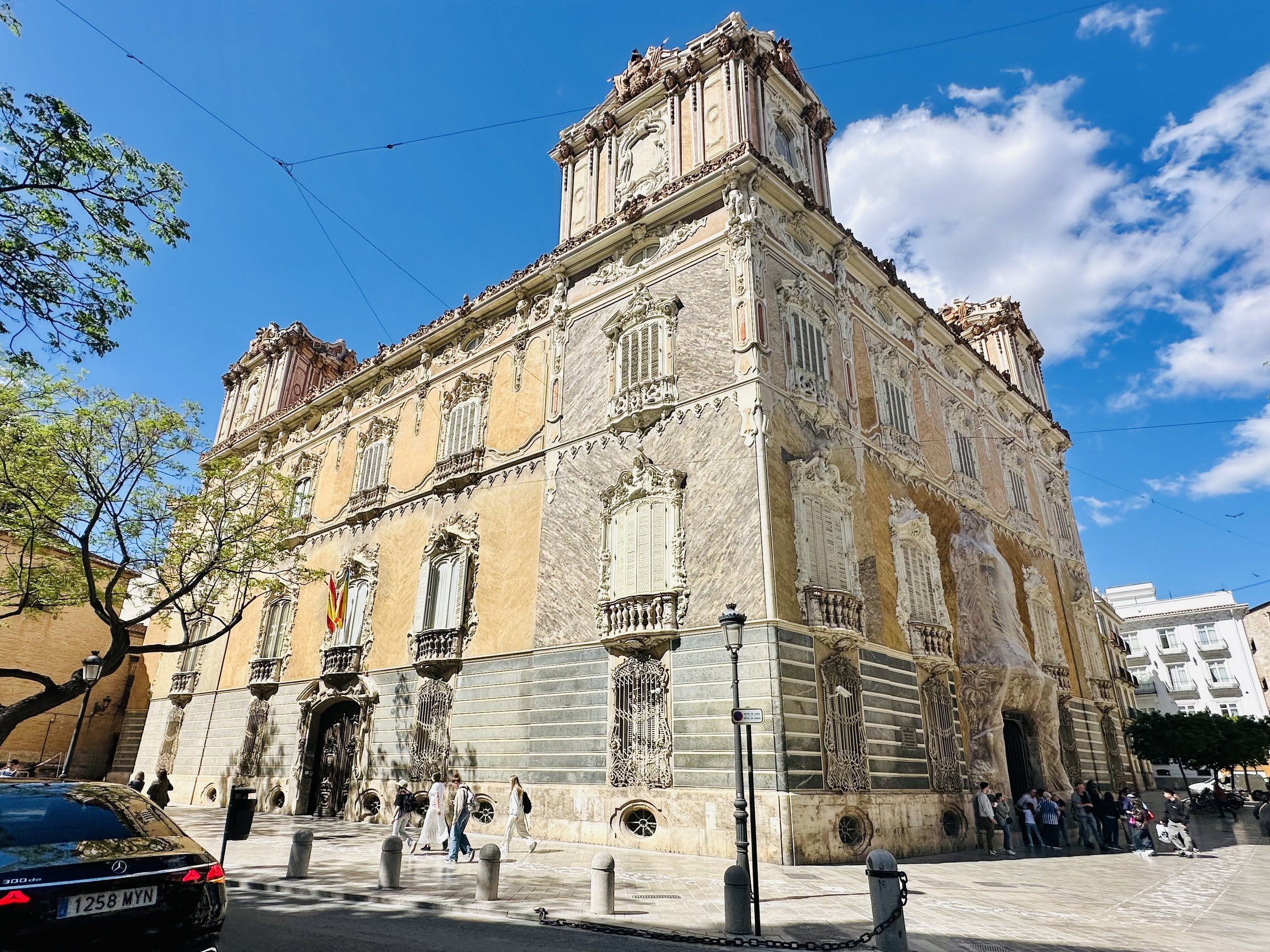
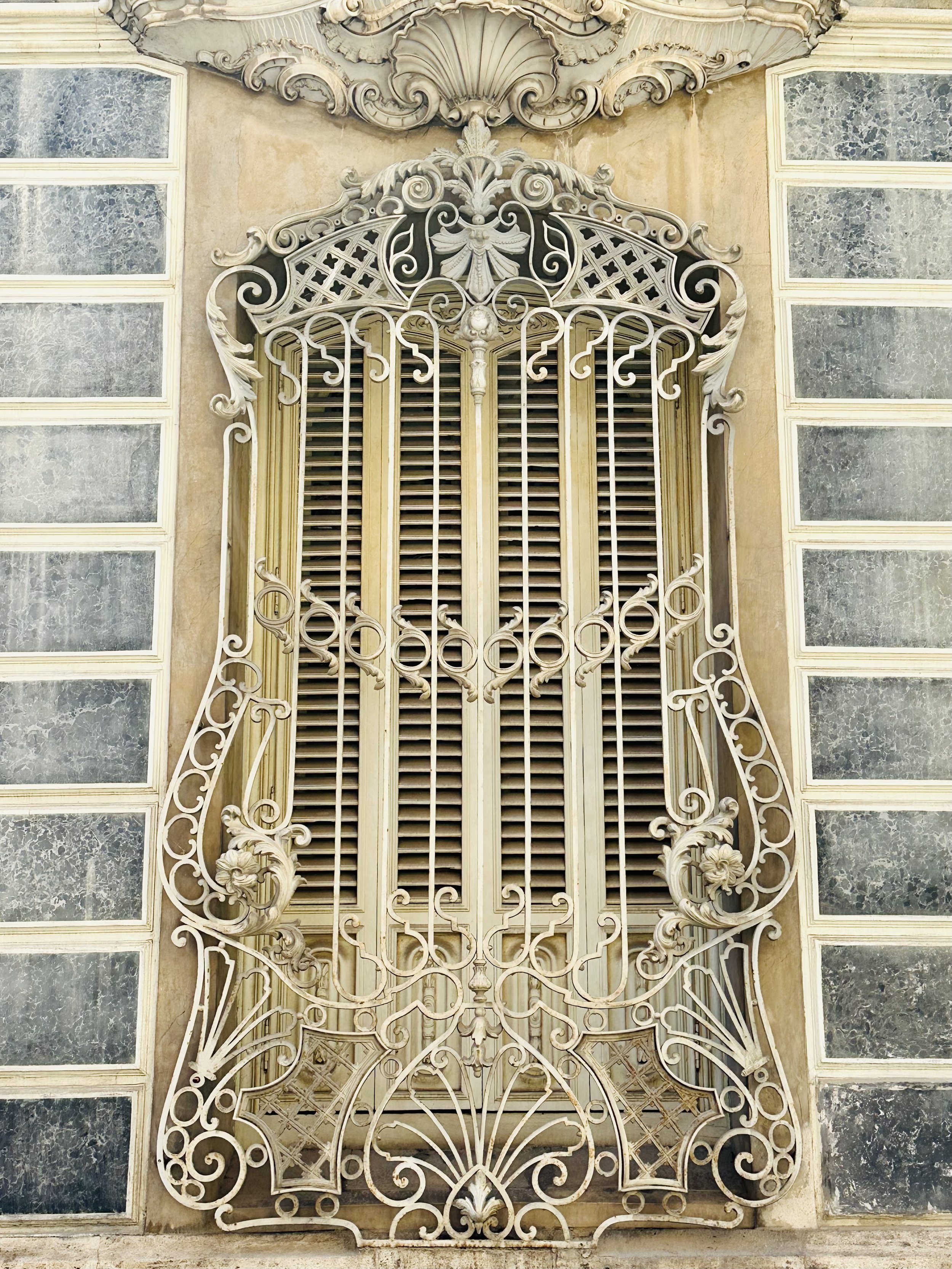
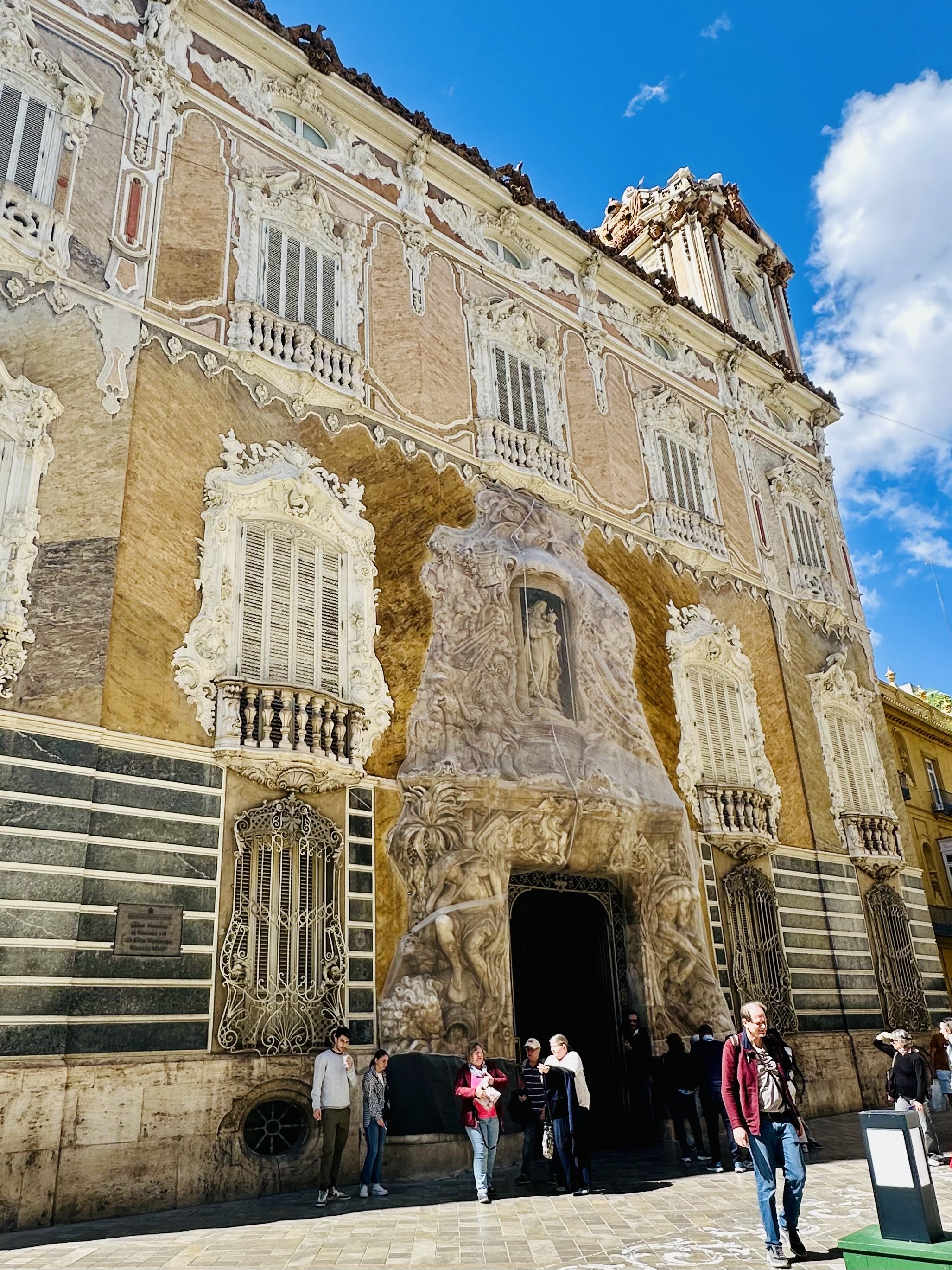

Inside the main door was a three-story courtyard with a small fountain and terra cotta figures of gods and women representing the arts. Inside the carriage entrance was the 18th-century ceremonial carriage of the Marqueses de Dos Aguas, dripping with gold leaf.

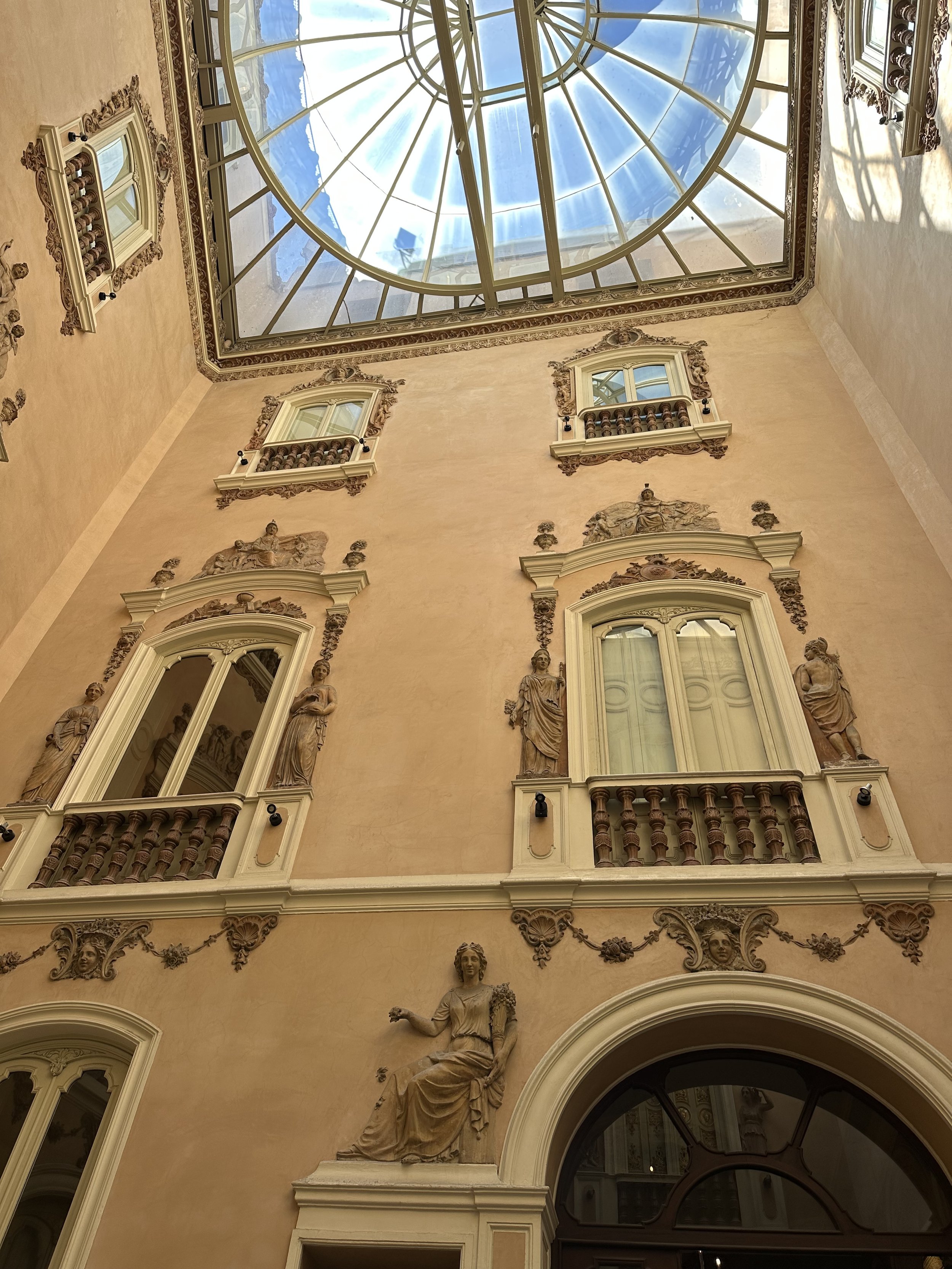
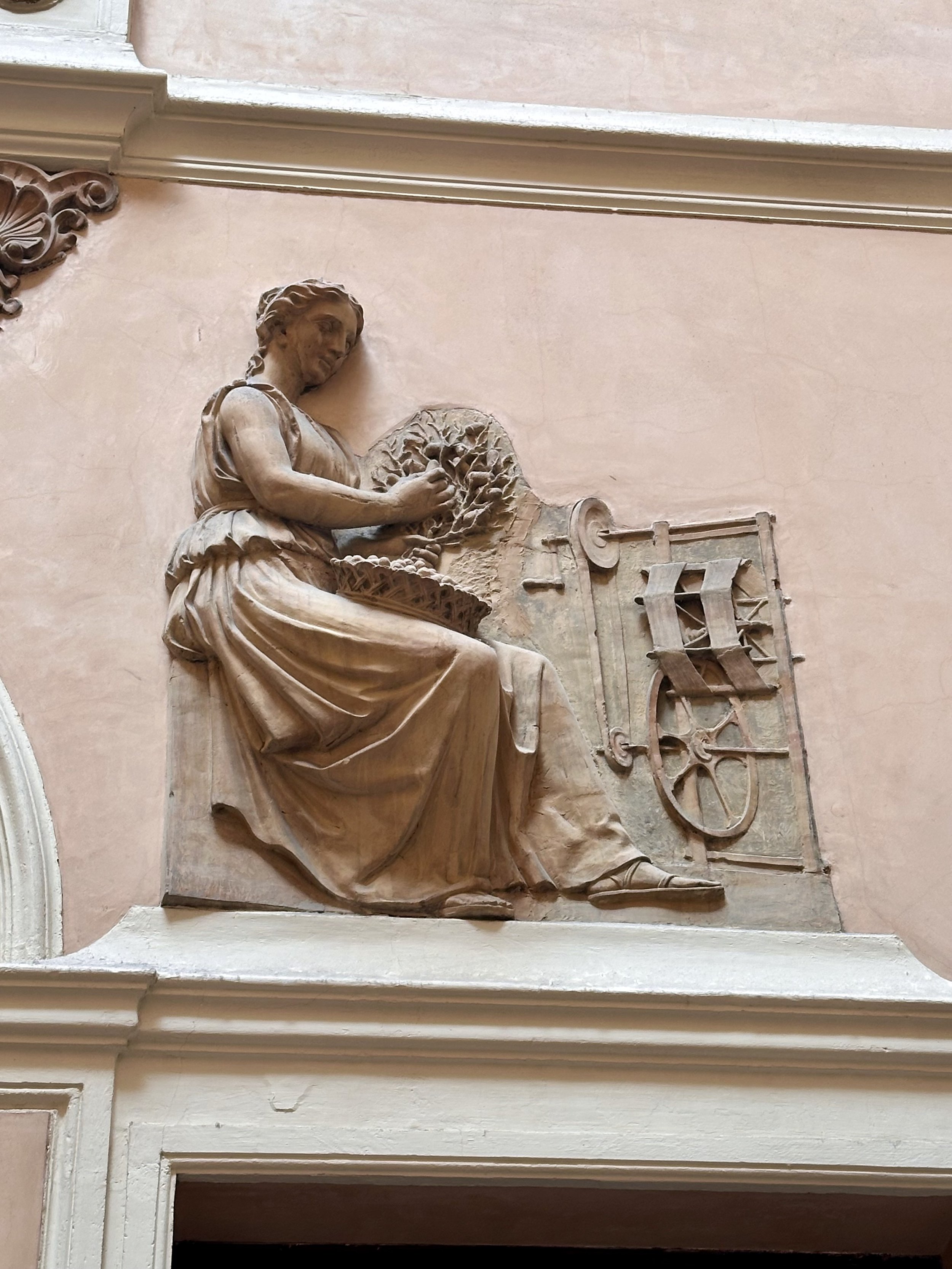
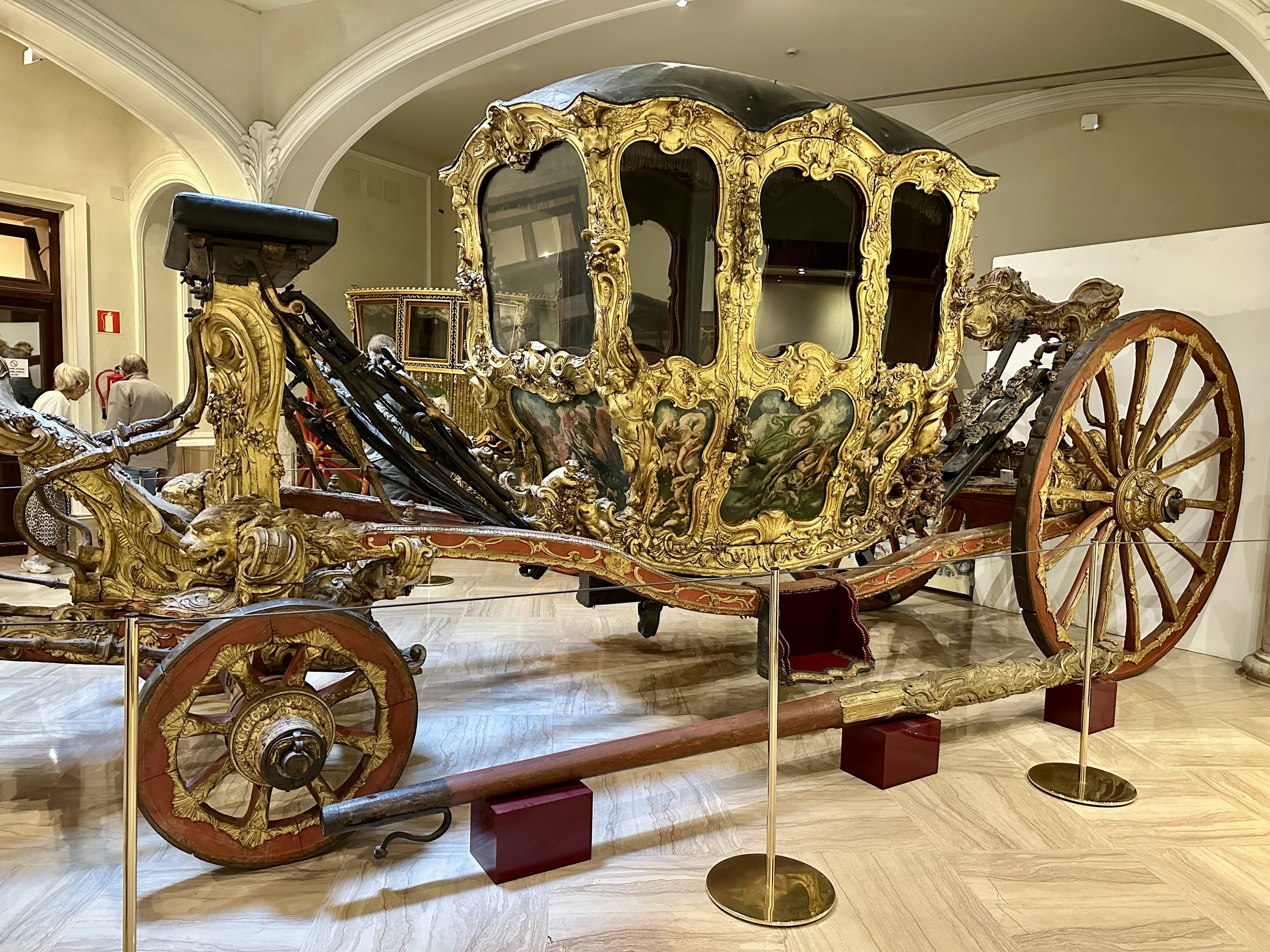
The palace’s interior rooms on the first floor reminded me of the mansions in Newport, Rhode Island. Although the overall scale of the home was smaller, every available surface was covered with expensive materials and hand-painted murals, in an extravagant display of wealth and status. Many rooms had been beautifully restored with their original furnishings and decor. My favorite space was the spectacular ballroom, which could easily have hosted a dance for the Bridgertons. Did they have any Spanish cousins?
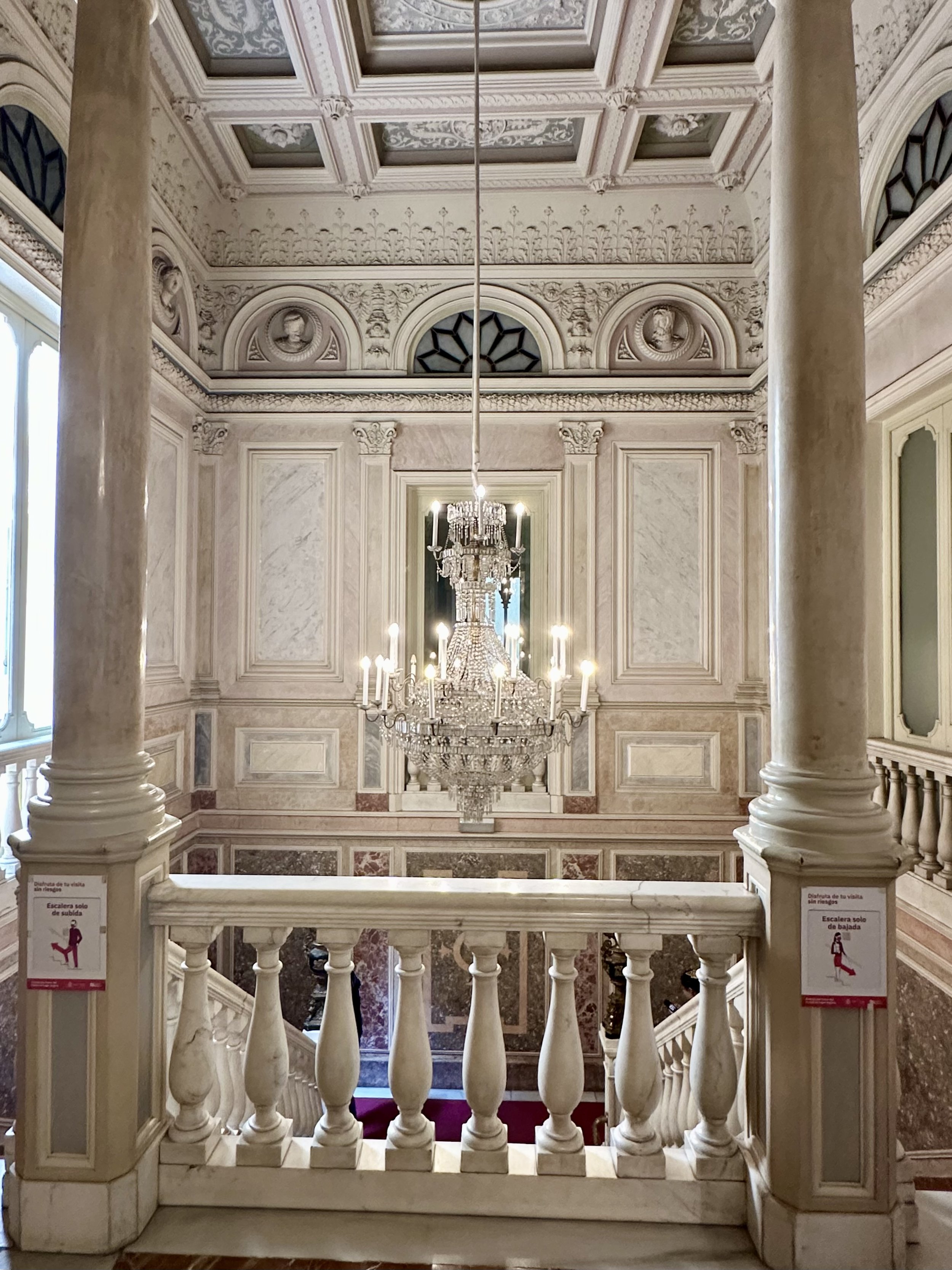
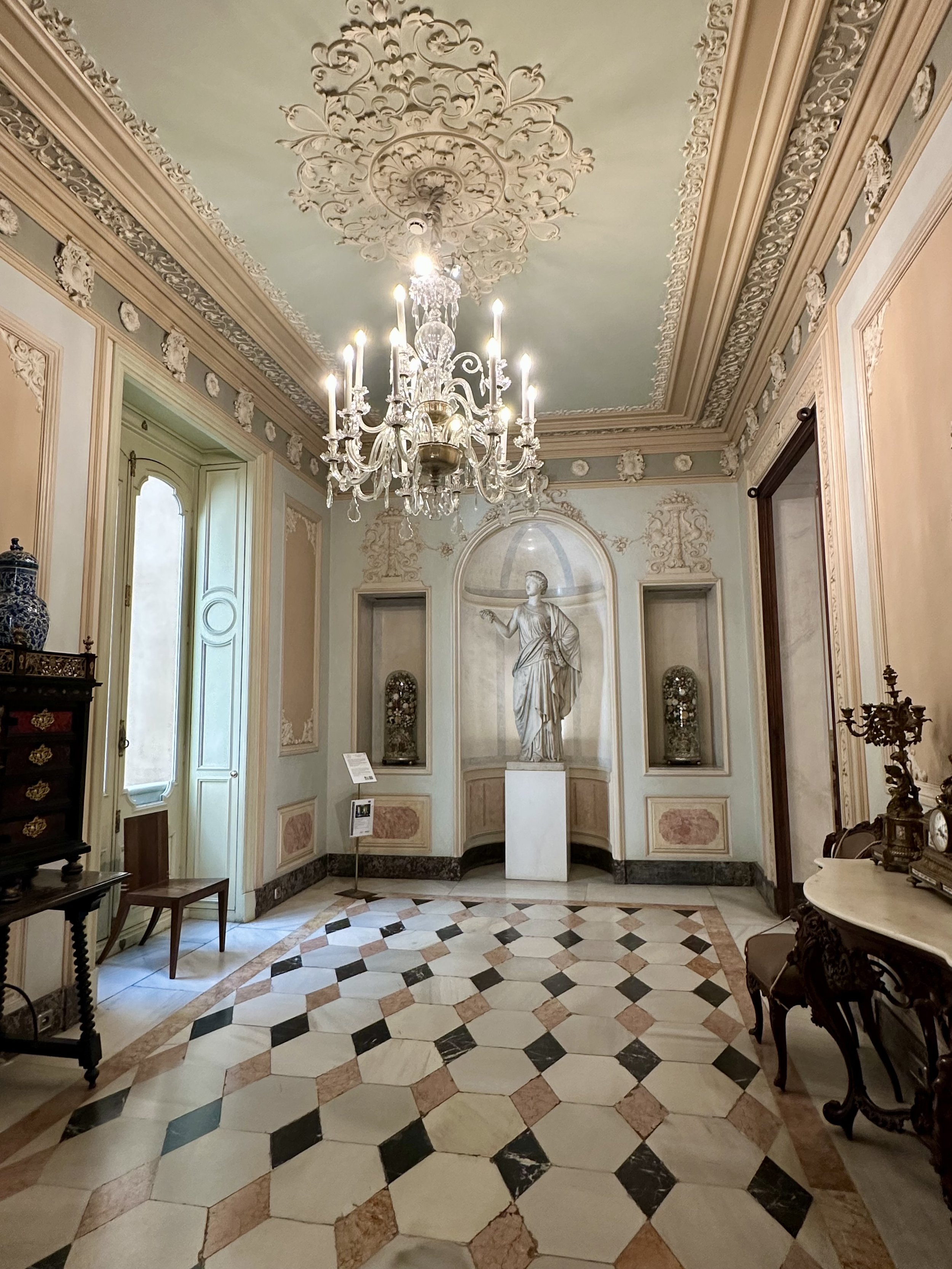
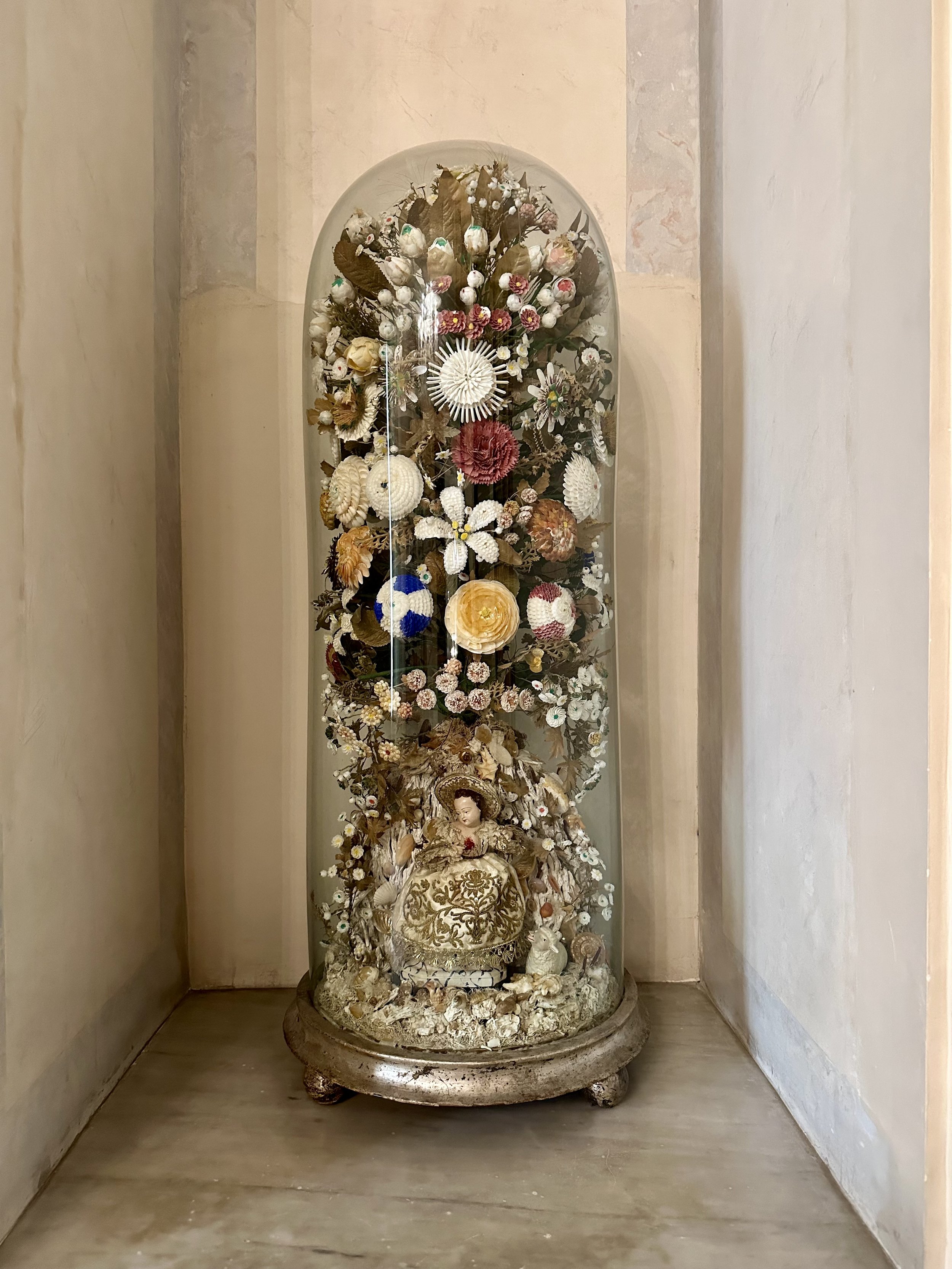

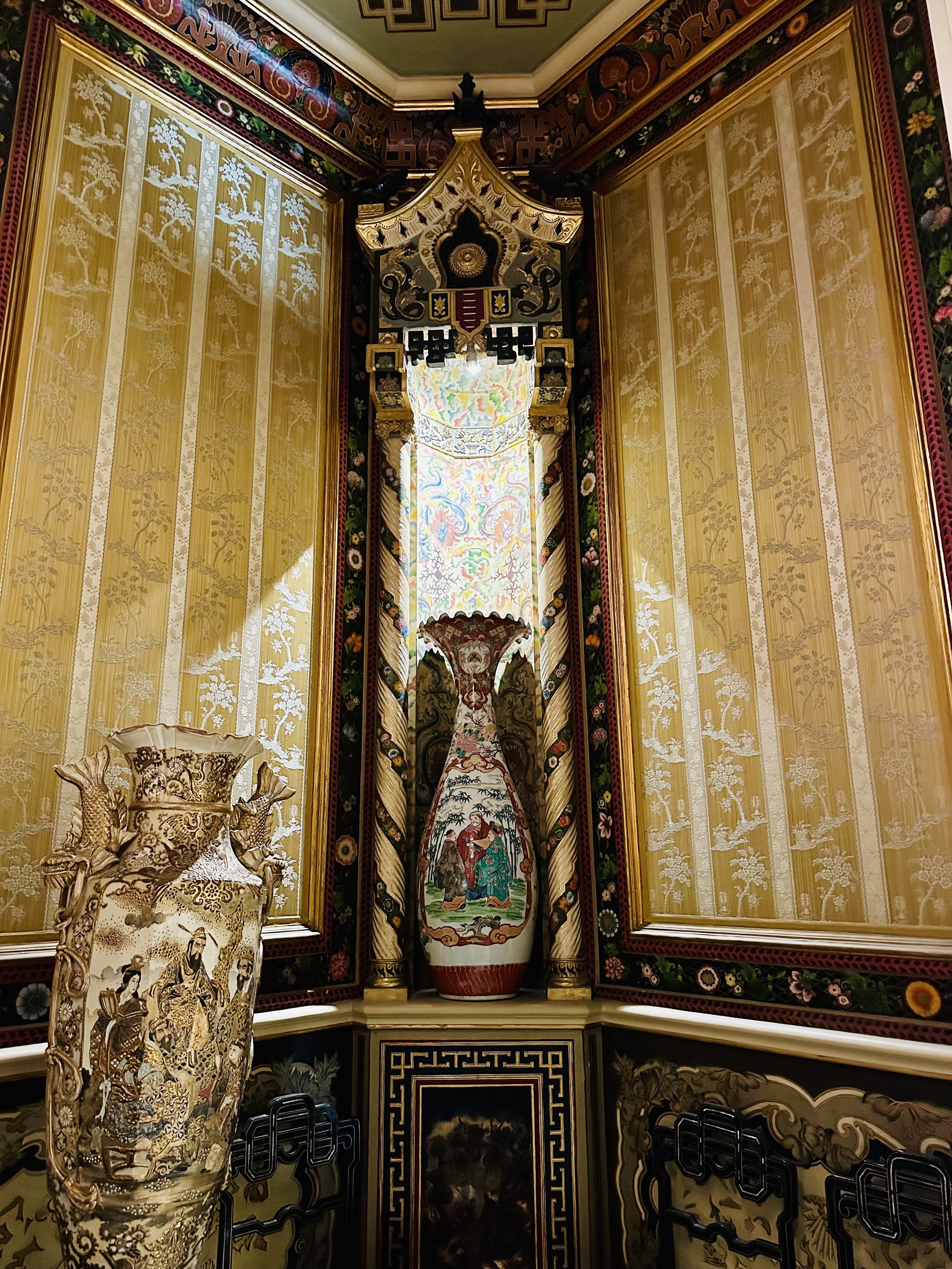
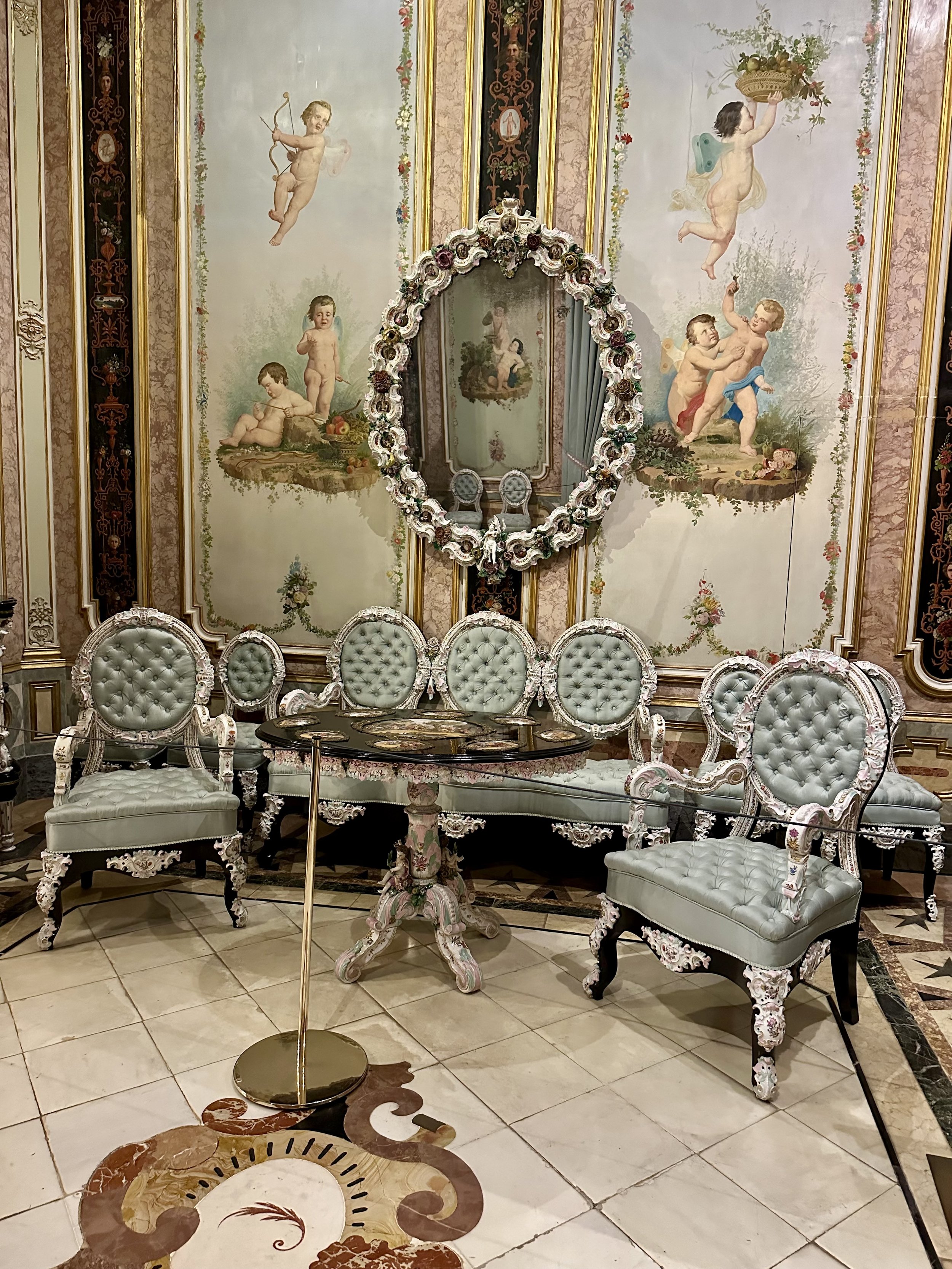

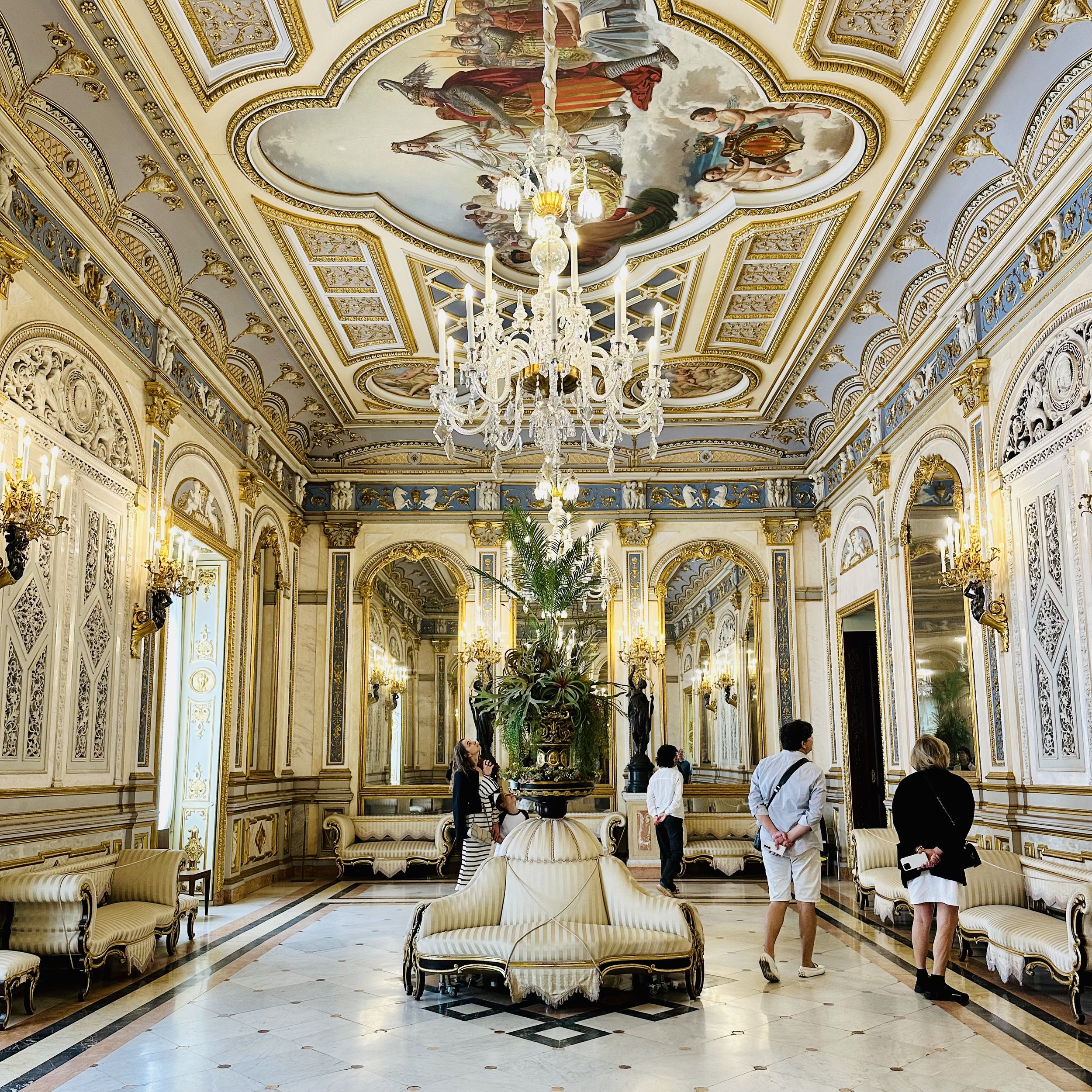

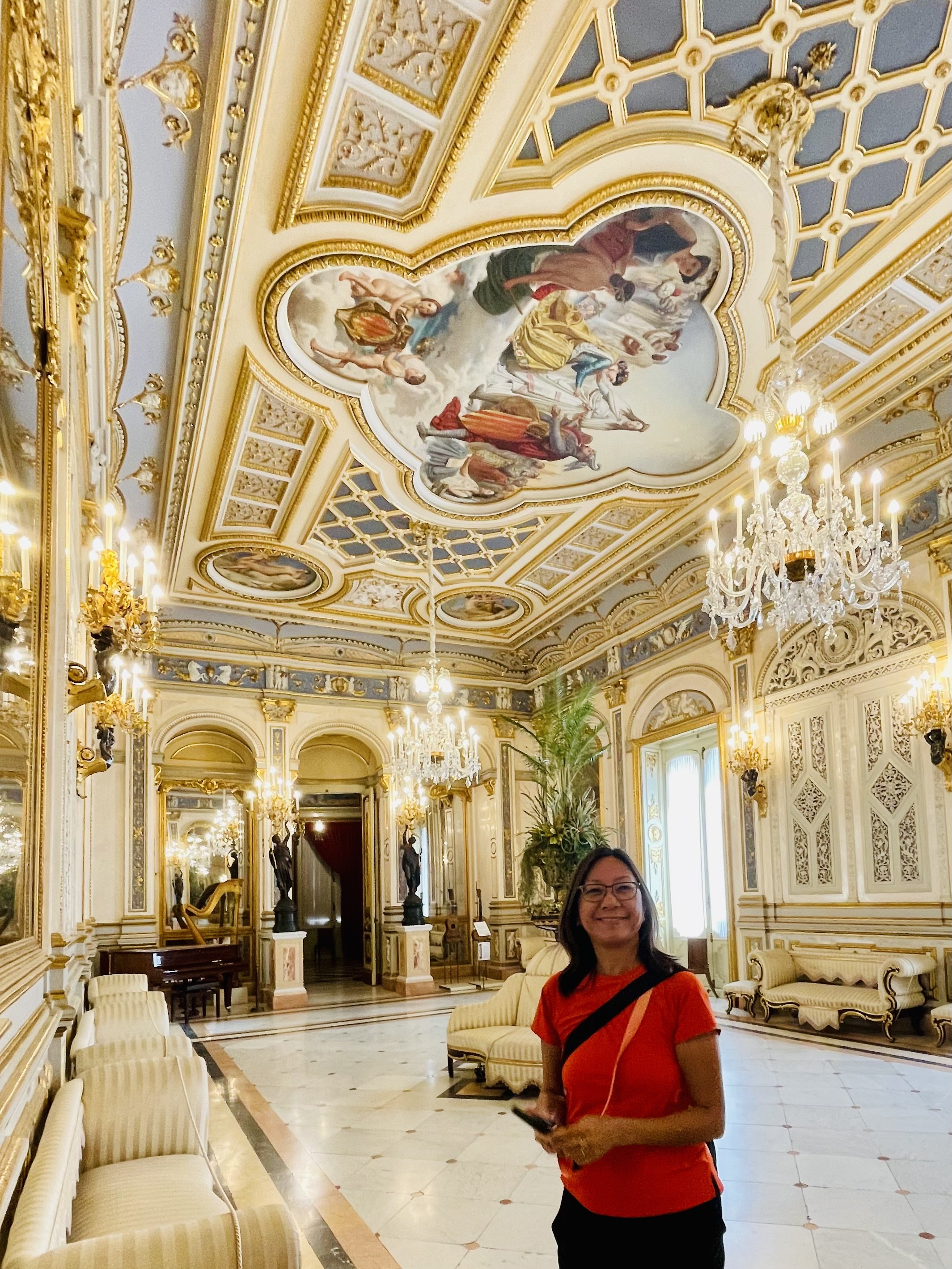
Here are some highlights from the Museum of Ceramics and Decorative Arts. A temporary exhibit on the ground floor featured bequests to the museum from notable women, including some stunning marquetry furniture from Morocco. The second floor, with its beautifully decorated ceiling beams, housed museum founder Manuel González Martí’s ceramics collection. I particularly liked the lusterware from the 15th century, the golden age of Valencian pottery, and the reproduction of a typical Valencian kitchen.
